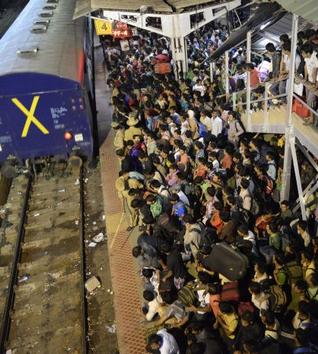
New Delhi, August 17: Fearing reprisals over the violence against Muslims in Assam, people from the northeast continued to flee from cities such as Bangalore, Chennai, Pune and Mumbai, even as ethnic clashes between Bodos and Muslims that began in July spread to Baksa, Nalbari and Kamrup districts on Thursday.
More than 3,000 labourers from the northeast living in Chennai thronged the station to take the weekly Egmore-Dibrugarh Express after they heard of rumours of planned attacks on them. Only 300 could board the crowded train; the rest were waiting for the next trains coming from Bangalore.
Things were no better in Bangalore where more people from the northeast quit their jobs to leave the city, despite Karnataka chief minister Jagadish Shettar's assurance of security. At least 6,800 people fled Bangalore on three special trains on Wednesday night.
In Assam, at least 19 people were injured in two incidents reported on Thursday. In Gossaigaon in Kokrajhar, miscreants threw acid at nine Muslims, while in Tamulpur in Baksa, 10 Bodos agitating against the arrest of protesters were injured in clashes with police.
The Army is out in Baksa, in addition to the lower Assam districts of Kokrajhar, Dhubri, Chirang and Bongaigaon since July 25.







Comments
Add new comment